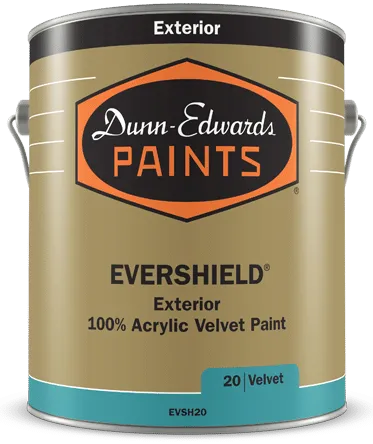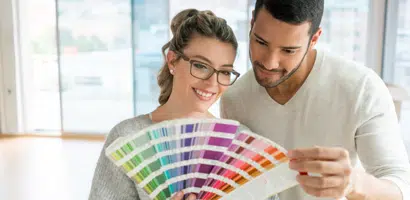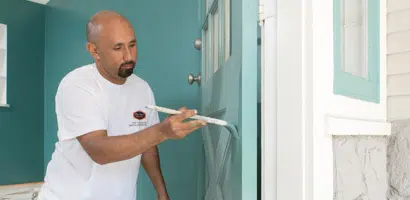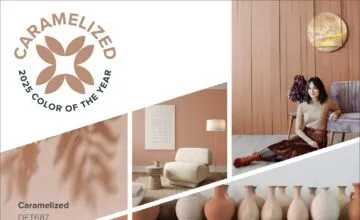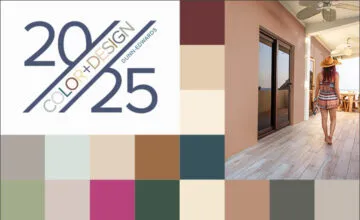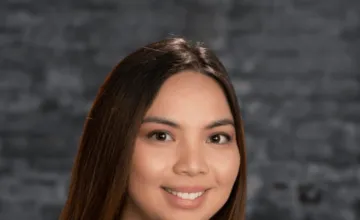Four Things Property Managers Need to Know About Color
10/25/2021 | davidcamacho |
Use the Power of Color Theory to Attract Tenants and Keep Properties Looking Their Best
Color theory might not be in your official job description, but it's all around you. Using the right color combinations in your properties will not only attract more tenants but will also help you avoid a situation where tenants feel the need to take the painting into their own hands.
Let's get something out of the way upfront: there's nothing wrong with white. Property managers love white paint for good reason: it's easy. But did you know that there are 115 whites in the Dunn-Edwards Perfect Palette®? Even if you're sticking to an all-white scheme indoors, it's important to select the correct combination for walls, trim, and ceilings. Combining the wrong whites could create an off-putting feel that could turn potential tenants away.
Pale palettes aside, there are a few reasons why you should consider dipping into more colorful hues. First, all-white rooms can have a clinical, unwelcoming feel. Especially when they're empty. Giving interiors even a subtle amount of color can make all the difference in attracting quality tenants. It can also make special features—such as trim work or architectural elements—really pop. All of this goes double or even triple for short-term tenants, a group that is increasingly seeking out colorful, Instagram-able moments.
There are several factors that play a role in making good color decisions. Architectural style, property location, type and amount of natural lighting, and fixtures are all key factors. In addition, what worked a few years ago might look dated next year.
Have we piqued your color curiosity? Here are four things to keep in mind when it comes to color.
- Color should come last.
When it comes to both interiors and exteriors, color should be one of the last big decisions a property manager makes. That's because color should serve the architecture and design style of a property, not the other way around. For furnished properties, try pulling a color from the existing upholstery or decor. For unfurnished properties, let architecture and location be your guide.
Example of a furnished room painted to match its decor
Example of an empty room painted to compliment the location and architectural features
- Ask an expert.
While this blog post is intended to point you in the right direction in terms of color selection, you don't have to make important color decisions without help. With the Dunn-Edwards InstaColor® iD Handheld Color Matching Tool, you can color match design elements, such as artwork, flooring, or fabrics. If you run into color questions, let our Professional Color Advisors help! Dunn-Edwards provides color consultations in-store, online, or even on-site (depending on the property location). Also, don't forget your Property Services Rep can help you with anything color. Finally, on the color page of the Dunn-Edwards website, you can search every one of the 2,006 colors in our Perfect Palette® collection, and every color is listed with its perfect trim and accent color, so you'll never have to guess.
Dunn-Edwards InstaColor® iD Handheld Color Matching Tool
- Learn the basics.
In color theory, there are three basic themes you can use to find colors that will work together: monochromatic, analogous, and complementary. A monochromatic theme is the simplest because it contains variations on the same hue. For example, beige walls that coordinate with a beige wood floor, a slightly darker beige accent wall, and a very light beige trim.
Example of a room that uses a monochromatic theme
The analogous theme uses colors that are positioned next to each other on a color wheel. To develop an analogous theme, start with two primary colors (red, blue, or yellow). The third color will be a blend of the two colors. An example of an analogous theme would be red, yellow, and red-yellow (otherwise known as orange). The third color acts as a bridge between the first two colors, creating a sense of harmony in the palette. Of course, most buildings aren't painted in true primary colors; they are usually tinted or shaded versions of true primaries, but the formula still works.
Example of a room that uses an analogous theme
The complementary theme uses two colors that are opposite each other on a color wheel, for example, red and green. The third color is usually neutral, such as white or gray. This theme works best when one of the colors is selected as the main or dominant color, with the other being used sparingly as an accent.
Example of a room that uses a complementary theme
- Stay on top of trends.
Trends change, and with them, your future tenants' color preferences. One easy way to stay on top of the latest color trends is to follow our specs+spaces design blog. Here, we'll announce the latest color and design trends, in addition to our much-anticipated Color of the Year. For 2022, the color is Art and Craft (DET682), a versatile brown that works with many different design styles: from Victorian and Craftsman to Modern, Bohemian, and Transitional. Check out our post about Art and Craft for ideas on style, accent colors, and palettes.
Dunn-Edwards 2022 Color of the Year Art and Craft (DET682)




